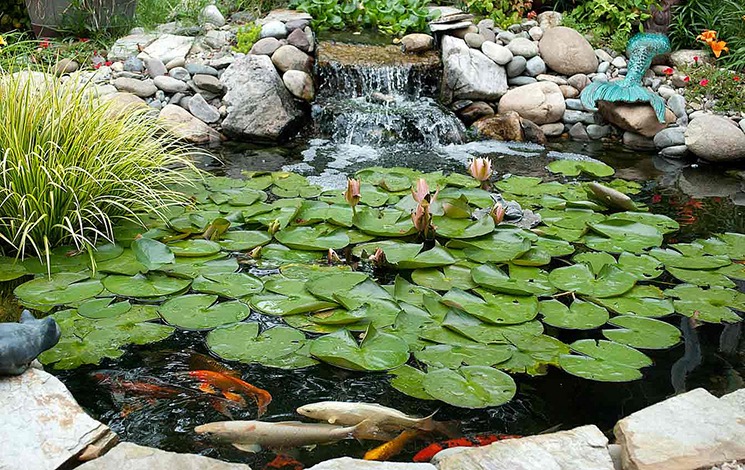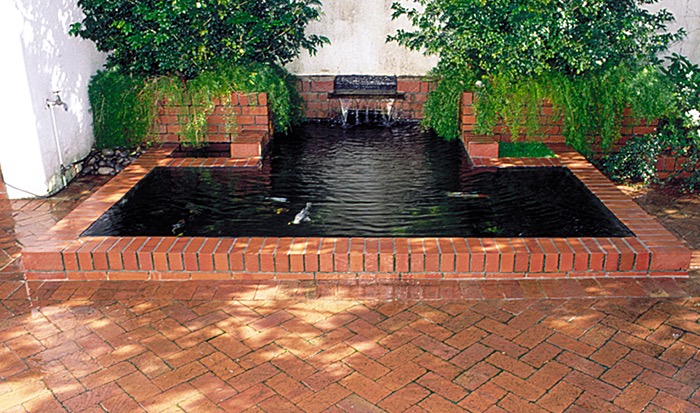Pond Pumps and Filters

Pond pumps and filters, Essential? Whether you are building a koi pond, a pond for goldfish, or even just a decorative pond with plants incorporated in the design, pond pumps and filters are essential elements that must be carefully considered – even if you decide not to use them.
- Pumps are essential to recirculate water in ponds and pools.
- Filters are necessary to keep pond and pool water clear and to get rid of harmful waste materials including dead plant matter including leaves and grass cuttings, as well as fish excreta and uneaten fish food.
Pond Pumps and Filters – Yes or No?
The decision to include pond pumps and filters in a garden pond will depend on the type of pond you are planning.
If you are going to install a fountain, or a waterfall or cascade, you will need a pump to move the water. If you are going to stock your pond with decorative koi fish, you will need a filter – and a pump to make it work.
There is nothing to stop you from installing pumps and filters in goldfish ponds, or even in ponds that have no fish in them at all, but many people opt not to. Generally the balance of nature will sort out any water problems, provided you remove leaves and other debris regularly. There are also products that you will find with all the other regular fish pond supplies that you can use to kill algae and clarify water if you need to.
Pond Pumps
There are two main types of pump that you can use in garden ponds.
- The sort that is submerged in the water.
- The sort that is housed on the ground, outside the pond.
Your choice will depend largely on the volume of water in your pond. For example, submerged pumps are ideal for fountains and even smaller cascades, but if you want to create the impression of a flowing stream, or create a dramatic waterfall effect into the pond, then you are going to need a more powerful surface pump.
Pump output will be specified on the packaging of any sort of pump. This is described in gallons or liters per hour, referring to the volume of water it can move during this time. But you don’t want a pump that has too much power otherwise it may churn up sand at the bottom of the pond, making the water murky.
If you are choosing a pump for a fountain, check the water head and make sure that this is compatible with your design. This is the distance between the water level of the pond and the maximum height the water will spray or spurt.
Also consider accessibility when opting for a submersible model. While it may be powerful enough to operate a fountain in a large pond, if the fountain is in the middle of the pond, you’re going to have wade through the water to clean it or to remove it if something goes wrong with it.
Generally submersible pumps are completely sealed, and simple to install and operate. Most of these have some type of strainer attached to the inlet. This strainer is not a filter, but it does prevent fish and any floating debris from getting into the moving parts of the pump.
Surface pumps are generally more expensive that the submersible type, especially those that are self-priming. They should be sited near to the pond, preferably just below the level of the water and housed in a waterproof box of some time to ensure they don’t get wet.
Pond Filters
Like pumps, filters may be housed outside the pond or submerged in the water.
The choice is between a mechanical filter that will sieve out dirt, or a biological filter that will help to break down decaying matter in the pond.
While mechanical pond pumps and filters may be operated sporadically, when needed, biological filters take a few weeks to start working, and then they must be left on continuously. Once it is running, a biological filter should only be disconnected for cleaning, which should be done regularly to prevent too much waste building up in the filter media. The manufacturer’s instructions will normally specify how often this should be.






